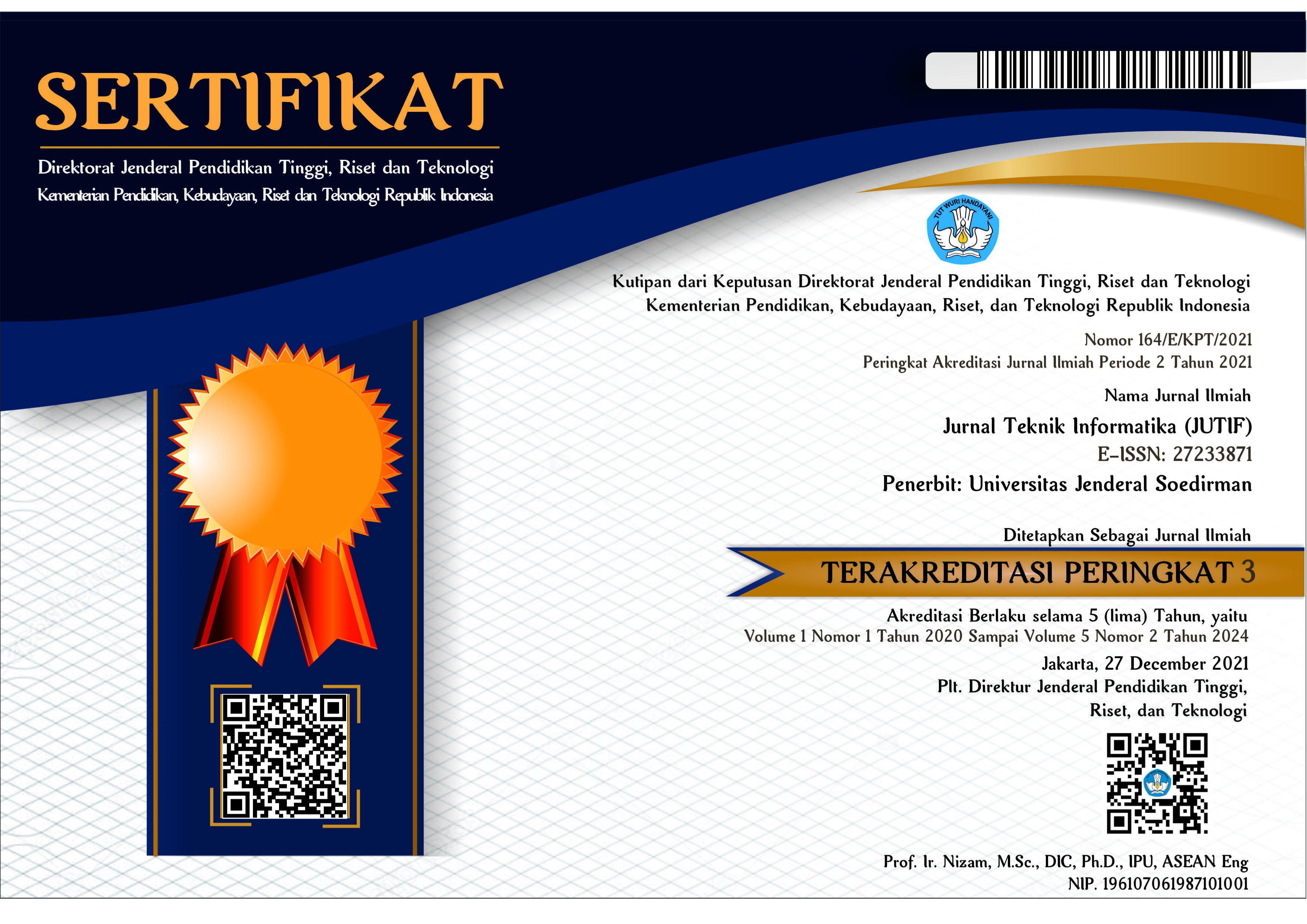THE EVALUATIONS FOR THE BACKEND OF ONTI MEASURES WITH BLACK BOX METHOD
DOI:
https://doi.org/10.52436/1.jutif.2024.5.4.2089Keywords:
backend, inconsistency measures, Onti Measures, OWL ontologies, OWL reasonerAbstract
Inconsistency in an ontology can be a serious problem since it can mess up the information in the ontology. Ontology-based inconsistency measure gives inconsistency value of the whole base of the OWL ontology. It means the produced inconsistency value is used to evaluate its whole base. Based on this characteristic, there were 10 inconsistency measures created in the previous research and collected into one package of measures in an application program, namely Onti Measures. The application will not be useful if the measures do not work well. This problem leads to conduct evaluations. In this research, evaluations for the backend part of Onti Measures with the use of three kinds of OWL reasoners are done to know the performance of the application system with the comparison of each reasoner usage. The evaluations for the whole part of the application are not the scope of this research since they are only done for the backend part. Particularly, they are done with the black box method since the structure of the codes are not necessary to be known. They are evaluated with several OWL files as test cases and as the inputs of the backend program. The evaluation shows that the same inconsistent OWL file that is computed with a different type of inconsistency measure with any chosen reasoner may result in different inconsistency value. Other evaluations are provided. Overall, they show that Pellet is better than the two other reasoners and I_(D_f ) is more efficient than the other measures.
Downloads
References
M. Krötzsch, F. Simančík, and I. Horrocks, “A description logic primer,” in Perspectives on Ontology Learning, vol. 18, 2014.
A. Hunter and S. Konieczny, “Approaches to measuring inconsistent information,” in Lecture Notes in Computer Science (including subseries Lecture Notes in Artificial Intelligence and Lecture Notes in Bioinformatics), 2004. doi: 10.1007/978-3-540-30597-2_7.
A. Hunter and S. Konieczny, “Shapley inconsistency values,” in Proceedings of the International Conference on Knowledge Representation and Reasoning, 2006.
A. Hunter and S. Konieczny, “Measuring inconsistency through minimal inconsistent sets,” in Proceedings of the International Conference on Knowledge Representation and Reasoning, 2008.
M. Thimm, “On the expressivity of inconsistency measures,” Artif Intell, vol. 234, 2016, doi: 10.1016/j.artint.2016.01.013.
Y. Ma, G. Qi, and P. Hitzler, “Computing inconsistency measure based on paraconsistent semantics,” Journal of Logic and Computation, vol. 21, no. 6, 2011, doi: 10.1093/logcom/exq053.
J. Grant and A. Hunter, “Analysing inconsistent first-order knowledgebases,” Artif Intell, vol. 172, no. 8–9, 2008, doi: 10.1016/j.artint.2007.11.006.
N. A. Ekowati, “Inconsistency Measures for OWL Ontologies,” Technische Universität Dresden, Dresden, 2017.
K. Mu, W. Liu, Z. Jin, and D. Bell, “A Syntax-based approach to measuring the degree of inconsistency for belief bases,” International Journal of Approximate Reasoning, vol. 52, no. 7, 2011, doi: 10.1016/j.ijar.2011.04.001.
J. Grant and A. Hunter, “Measuring consistency gain and information loss in stepwise inconsistency resolution,” in Lecture Notes in Computer Science (including subseries Lecture Notes in Artificial Intelligence and Lecture Notes in Bioinformatics), 2011. doi: 10.1007/978-3-642-22152-1_31.
D. Doder, M. Raković, Z. Marković, and Z. Ognjanović, “Measures of inconsistency and defaults,” International Journal of Approximate Reasoning, vol. 51, no. 7, 2010, doi: 10.1016/j.ijar.2010.05.007.
G. Xiao and Y. Ma, “Inconsistency measurement based on variables in minimal unsatisfiable subsets,” in Frontiers in Artificial Intelligence and Applications, 2012. doi: 10.3233/978-1-61499-098-7-864.
Nur Alfi Ekowati, Ika Indah Lestari, and Sulistiyasni, “Pengembangan Onti Measures Berbasis Web dengan Pengujian Data Ontology Virus dan Penyakit,” Jurnal Nasional Teknik Elektro dan Teknologi Informasi, vol. 10, no. 4, 2021, doi: 10.22146/jnteti.v10i4.2443.
Ika Indah Lestari, Nur Alfi Ekowati, and S. Sulistiyasni, “Descriptive Analysis and Comparison of Reasoner Using Onti Measures,” Jurnal Teknik Informatika (Jutif), vol. 5, no. 1, pp. 301–312, Feb. 2024, doi: 10.52436/1.jutif.2024.5.1.1839.
S. Abburu, “A Survey on Ontology Reasoners and Comparison,” Int J Comput Appl, vol. 57, no. 17, 2012.
A. Khamparia and B. Pandey, “Comprehensive analysis of semantic web reasoners and tools: a survey,” Educ Inf Technol (Dordr), vol. 22, no. 6, 2017, doi: 10.1007/s10639-017-9574-5.
H. Liu and H. B. Kuan Tan, “Covering code behavior on input validation in functional testing,” Inf Softw Technol, vol. 51, no. 2, 2009, doi: 10.1016/j.infsof.2008.07.001.
S. Nidhra, “Black Box and White Box Testing Techniques - A Literature Review,” International Journal of Embedded Systems and Applications, vol. 2, no. 2, pp. 29–50, Jun. 2012, doi: 10.5121/ijesa.2012.2204.
“OWL Test Cases.” Accessed: May 22, 2023. [Online]. Available: http://owl.semanticweb.org
S. Rudolph, “Foundations of description logics,” in Lecture Notes in Computer Science (including subseries Lecture Notes in Artificial Intelligence and Lecture Notes in Bioinformatics), 2011. doi: 10.1007/978-3-642-23032-5_2.




























